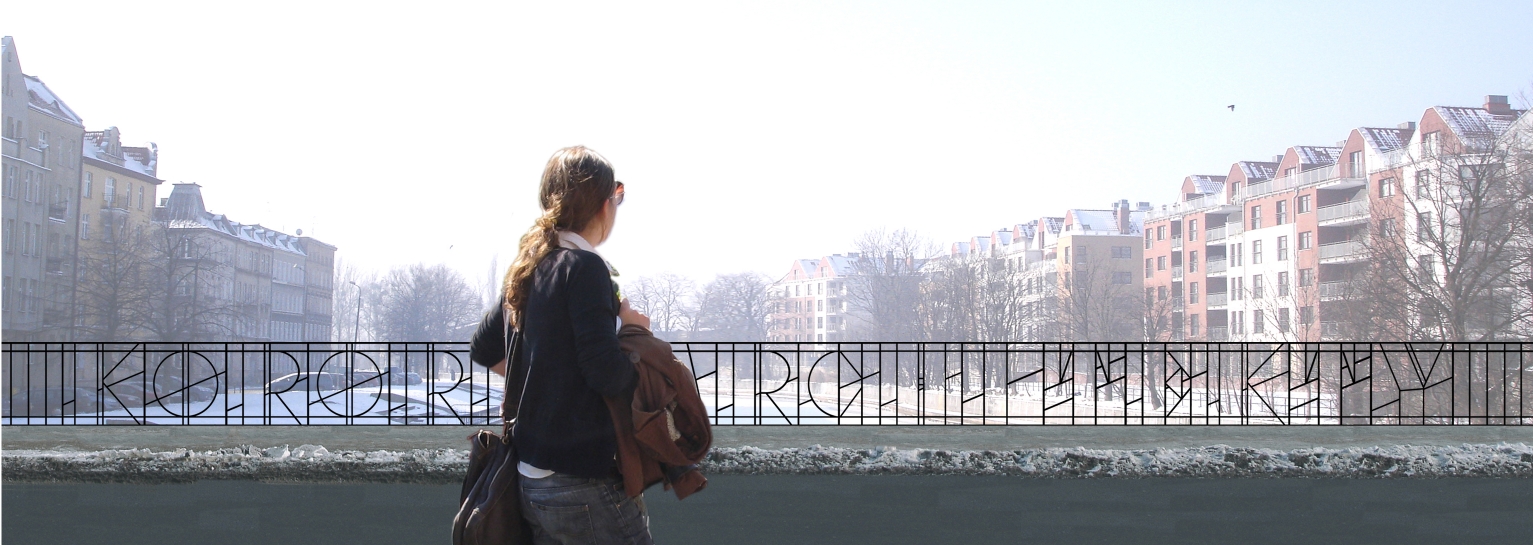“Art in public is what makes public space more interesting than art”
This year’s competition came out as a further important step in the development of the Outdoor Gallery of the City of Gdansk. Seven projects were presented by artists from all over the world and proved the high quality on an artistic and professional level.

1st Prize:Blind/Ślepi by Bert Theis (Luxembourg)

1st Honorary Mention: Occurence by Thorsten Goldberg (Germany)
The second project by Thorsten Goldberg is suggested to be realized as a complimentary project together with Bert Theis’ work. It will add a different voice. The work has a quality which is based on characteristics such as the ephemeral, the surprise, the joy, the summertime attraction, and will function as a meeting point for the curious crowd as can be found all over the world in front of water surprise such as geyser in Iceland. Dolne Miasto, the Lower Town of Gdansk, is bordered by three entrances. Two of them are prominently marked, but the Toruńska Bridge is still like a backdoor, despite the high traffic that can be seen on Google Earth. Crossing the bridge and entering the district from the west will cause an instant signal: a foggy, dense cloud will appear next to the bridge. Therefore the cloud will be welcoming the visitors entering the Lower Town. As the artist says: “The cloud will be bright pink and pop up on the nearest terrace of the riverbank. It will form itself instantly by strong fog nozzles and light to a size of about 3 x 5 meter and it will be there only a very short time – about 1 minute. The shape and the material will associate to a landed cumulus cloud, the color may also bring up associations to cotton candy, and when switched off and dissolving it may associate white smoke.But not every walker will activate the cloud. A photoelectric sensor, or photo-eye will be installed on the bridge to detect only pedestrians going east on either side of the walkway. There will be an additional programming, that only every tenth walker will cause a cloud. Cars will cause no effect. Because the pink occurence will be activated by one specific person walking over the bridge, it will be directed to him - it will be his or her cloud. At the same time light and fog functions as a signal, visible from a far.”

2nd Honorary Mention: Green Gate Project by Weronika Kiersztejn and Michał Kozik (Poland)
The work entitled Green Gate is designed by two young architects from Silesia region in Poland: Weronika Kiersztejn and Michal Kozik. Both of them are just completing their graduate studies this year. This is already the second big success of this team: in 2010 they won first prize in International Biennale of Interior Architecture in Krakow. To invite such young people to such serious competition as the Outdoor Gallery is, was a brave decision of its jury. Today, after the anonymous voting, we are happy to recognize, that this is the very team who wins the third prize in this year’s competition. Green Gate is a multi-layered project. Its visual actions refer to two different perceptual distances of the world: local and global. A local distance is direct being in and seeing an urban interior. Here the designers are using contemporary architectural language using a layer of green plants to build the balustrade of the bridge which links the Lower Town with the Old Suburbs district. In consequence, the interior of the urban canal, which is already partly green, receives consistency if a city park. The concept of Green Gate (the name is already used for a historical bridge in the town, yet the name is not referring to nature and its plants) receives a new, contemporary meaning. The second distance is the global Google network, which makes the image of every part of the globe accessible via the Internet to the entire world. The bridge’s floor is covered by a particular pattern-mosaic, which, besides its aesthetical value, is a QR code (more advanced version of a barcode). QR code imprinted into the bridge’s floor can be scanned by everyone, who will spot the bridge of the Lower Town. Through the scan, he/she will receive an access to a webpage, which describes the green architecture concept for the Lower Town. This double construction of the project is simultaneously local and global. It shows the desire of young architects to be sure, that the city which aspires to the world will not lose its local uniqueness; that such local uniqueness will be the road to participation in the world.







 BIP
BIP